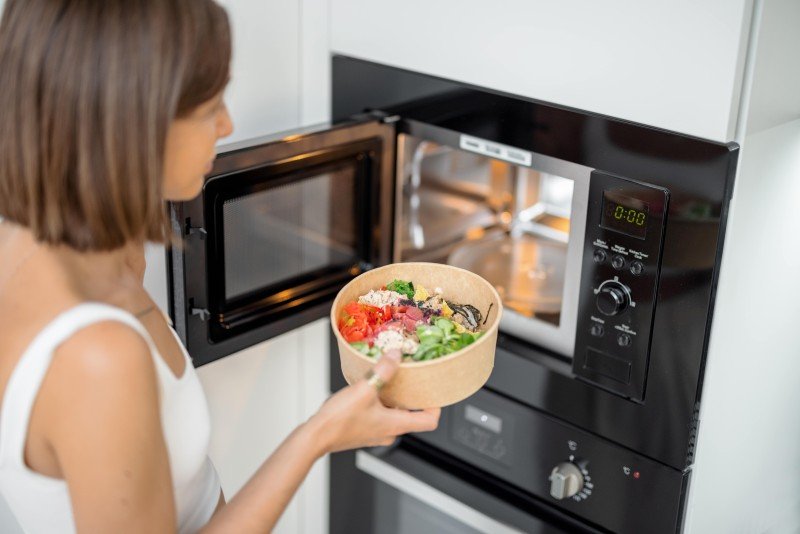Understanding Ovens and Hobs: A Comprehensive Guide
Cooking has come a long method because the days of open flames and simple cooking approaches. Today, ovens and hobs are at the heart of contemporary cooking areas, providing adaptability, effectiveness, and a selection of cooking choices. Whether you are an amateur cook or an experienced chef, comprehending the distinctions, features, and functions of these appliances is important for making the most of culinary capacity. This post breaks down the numerous types of ovens and hobs offered on the marketplace, their performances, and how to pick the ideal appliances for your kitchen.
What is an Oven?
An oven is an enclosed space designed for heating and cooking food, providing various techniques such as baking, roasting, and broiling. Ovens come in various types, each serving distinct cooking choices and requirements.
Types of Ovens
Conventional Ovens:
- Use gas or electrical energy for heating.
- Typically consist of a heating element at the top and bottom.
- Ideal for standard baking jobs.
Convection Ovens:
- Use a fan to distribute hot air, promoting even cooking.
- Ideal for baking, roasting, and reheating.
- Reduces cooking time and boosts taste.
Steam Ovens:
- Utilize steam to cook food while retaining wetness and nutrients.
- Exceptional for health-conscious cooking, such as veggies and fish.
Microwave Ovens:
- Use electro-magnetic radiation to heat food quickly.
- Best for reheating leftovers or cooking simple meals.
Wall Ovens:
- Built into the wall, conserving area in the kitchen.
- Offered in numerous configurations, including single or double ovens.
Secret Features of Ovens
- Temperature Control: Precision heating for numerous baking and cooking processes.
- Self-Cleaning Options: Some designs have self-cleaning modes that use heats to burn food residue.
- Smart Features: Wi-Fi connection permits remote pre-heating, tracking, and dish management via smartphones.
What is a Hob?
A hob is a cooking surface, frequently described as a range or cooktop, where pots and pans is placed for heating. Hobs are readily available in different products, sizes, and heating methods, dealing with varied cooking needs.
Kinds of Hobs
Gas Hobs:
- Utilize gas burners for direct flame cooking.
- Deal precise temperature control and are favored by lots of professional chefs.
Electric Hobs:
- Use electric coils or smooth tops.
- Some designs are equipped with induction innovation, offering quick heating through electro-magnetic energy.
Induction Hobs:
- Cookware must be made of magnetic products.
- Really energy-efficient, providing rapid heat and reducing burn dangers.
Ceramic Hobs:
- Feature a glass-ceramic surface area with heating components underneath.
- Easy to clean but can be less energy-efficient than induction hobs.
Key Features of Hobs
- Burner Configuration: Varies from two to six burners, depending on model and size.
- Power Levels: Multiple settings enable greater accuracy in cooking.
- Security Features: Options like flame failure gadgets and kid lock settings ensure security during cooking.
Selecting the Right Oven and Hob
Selecting the ideal oven and hob for your kitchen involves careful consideration of numerous factors. Below is a list of questions to assist your choice process:
- What is your main cooking style?
- How much kitchen space do you have?
- What is your budget plan?
- Do you prefer gas or electric appliances?
- Are additional features like clever connection crucial to you?
Table Summary of Key Differences Between Ovens and Hobs
| Feature | Oven | Hob |
|---|---|---|
| Functions | Baking, roasting, broiling | Boiling, frying, sautéing |
| Cooking Method | Enclosed heat | Direct cooking surface area |
| Temperature Control | Adjustable settings | Range settings |
| Types | Electric, gas, convection, microwave | Gas, electric, induction, ceramic |
| Cooking Capacity | Larger (can prepare several meals) | Smaller (focus on instant cooking) |
| Cleaning | Self-cleaning options offered | Generally manual cleaning needed |
Maintenance Tips for Ovens and Hobs
Proper care and maintenance of your cooking home appliances extend their lifespan and performance. Here are vital maintenance ideas:
Regular Cleaning:
- Clean the oven interior after each use to avoid residue accumulation.
- Wipe down hob surfaces after preparing to prevent stains.
Inspect Seals:
- Ensure the oven door seals are intact to preserve energy efficiency.
- Replace worn-out gaskets and seals as required.
Examine Burners and Elements:
- For gas hobs, look for clogs in burners.
- For electric hobs, examine coils and surfaces for signs of wear.
Frequently asked questions
Can I use any pots and pans on induction hobs?
- No, induction hobs just work with magnetic pots and pans, such as cast iron or stainless-steel.
What is the most energy-efficient cooking appliance?
- Induction hobs are usually the most energy-efficient alternative, utilizing less energy than traditional gas or electric designs.
How typically should I clean my oven?
- It's suggested to clean your oven every few months, or more regularly if you utilize it often.
Can I install an oven and hob individually?
- Yes, both devices can be installed individually based upon kitchen style and area.
What should I consider when setting up a gas hob?
- Ensure proper ventilation and comply with local security codes. It is suggested to have an expert install gas appliances.
Understanding the features, types, and upkeep of ovens and hobs can considerably boost your cooking experiences. Choosing related internet page customized to your cooking design, kitchen area, and safety needs can make all the difference in accomplishing cooking success. By being notified about your options, you can delight in a more efficient and pleasurable cooking journey, bringing scrumptious meals to your table with ease.

